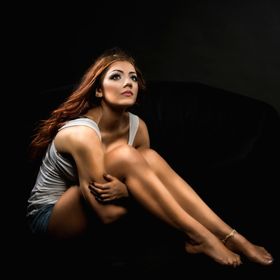

Millar_Images
Follow
Tilt Shift images of Prague
Tilt Shift images of Prague
Read less
Read less
Views
218
Likes
Awards
People's Choice in Tilt-shifts in cities Photo Challenge
Categories
Same photographer See allBehind The Lens
Discover more photos See all
Behind The Lens
Location
This was taken over looking the city of Prague, Czech Republic.Time
It was approximately 1-2pm in the afternoon.Lighting
Allowing the natural light to highlight the roofs, as well as parts of the streets and buildings was a great part of the time of day for this particular shot.Equipment
This was taken with a Nikon D200 Camera, using a Nikon PC-E NIKKOR 24mm f/3.5D ED Tilt-Shift Lens, mounted on a Manfrotto tripod.Inspiration
I was inspired to use a tilt shift lens on this to avoid a "boring" cityscape photo. The view was perfect for such an idea, considering the foreground, and horizon, with the road and church centered in the image to create the "tiny" effect.Editing
Post was mostly color correction and saturation, contrast, and some sharpening.In my camera bag
I shoot Nikon everything, so it is always a must have Nikon camera, mostly D810, and an array of lenses. My most used and versatile lens is my 24-70mm 2.8f VR. No, it is not the sharpest for the D810, but I am able to use it to it's best abilities, knowing what camera settings work best with that lens at different zoom ranges, getting pin sharp, crystal clear images. For my portrait work, I use it at times, as well as my primes, Nikon 50mm 1.4f, 85mm 1.8f. I always carry a polarizing filter for any landscape I do. Cleaning rags, brushes, lens brush, batteries, back up memory cards.Feedback
Since the lens was a tilt shift lens, and very, very pricey, my advice would be to purchase this lens only if you intend to use it. Tilt shift shooting takes practice, and pre-concept imagination.You have to image in the image before it is shot, then apply the settings to the lens, camera settings, and do a few test shots until getting it just right, clear, and colorful. Of course the time of day is subject to taste, but I've discovered that just before mid-day is when there is enough light to allow details in shadows to be relevant to the image as long as you can keep the sun 3/4 of the subject lit. If you look at the image, you will see that most of the image is lit properly, while even in the shadows details can be visible. This is from all the reflections of the surrounding highlights that keep the shadows illuminated slightly, while not blowing out the highlights, creating less harsh contrast.











































